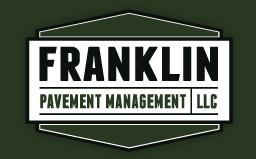PAVEMENT PRESERVATION
Franklin Pavement Management LLC provides a proactive approach to pavement management, by utilizing proven pavement preservation methods. A series of low-cost preventive maintenance treatments that extend the pavement's service life are the most effective means of lowering pavement costs.
SEALCOATING
Sealcoating protects pavement by shielding it from the elements and preserving the properties that give it strength and flexibility. Businesses and agencies that require a high standard in the visual appearance of their properties choose to sealcoat their pavement on regularly scheduled intervals. Sealcoating provides a consistent well-kept appearance throughout the life of asphalt pavement, preventing high traffic areas from deteriorating at a higher rate than low traffic areas. All pavements are flexible: concrete uses steel to increase tensile strength, allowing it to flex without breaking; asphaltic concrete pavement uses asphalt binder to give it similar properties. The day asphalt pavement is put in place it begins to age, and oils evaporate as the surface begins to oxidize and harden. As asphalt hardens, cracks deepen and multiply -- often without a significant change in performance. At this point, serious damage has already been done. As the cracks make their way through asphalt, water is able to enter the base, sub-base, and sub-grade. As the sub-grade turns to mud, the asphalt will begin to fail. Unfortunately, this is often when the first steps are taken to correct the problem. Making sealcoating part of a pavement management program will provide the greatest return on investment, lowering and making costs more predictable.
CRACK SEALING
As asphalt ages, it will become less flexible, causing the stresses of loading to eventually result in a strain that breaks rather than bends the pavement. Once a crack has appeared, the asphalt is much more vulnerable to base failure as water penetrates the sub-grade. Cracks that facilitate movement by either dynamic loads or changes in temperature are especially damaging. As the crack opens, loose material is wedged tightly between the two edges of pavement. As the gap closes, one of two things happens: either the material in the void crushes the edge of the crack or a new crack is formed. Special attention needs to be taken in determining whether a crack is a moving or non-moving crack. If the crack is moving, an expandable material is required to fill the void; if the crack is non-moving, a non-expandable material may be used.
OIL SPOT REMOVAL
Oil and other petroleum-based chemicals damage asphalt pavement. When asphalt is in contact with other lighter petroleum chemicals, the lighter chemicals act as a solvent, weakening the asphalt pavement. If left untreated, contaminated pavement will become pitted and begin to pool water, creating additional problems to the base and sub-grade.





